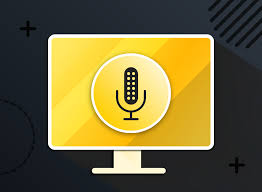Ways to Capture Audio on a Mac

Recording audio on a Mac is simple, thanks to several built-in applications and third-party options that make capturing sound easy. Whether you need to record lectures, meetings, podcasts, or voice memos, this guide will walk you through various methods to record high-quality audio on your Mac.

1. Record Audio with QuickTime Player
QuickTime Player is a built-in Mac application that allows you to record audio with ease. Here’s how to use it:
- Open QuickTime Player: Go to Applications > QuickTime Player.
- Start a New Audio Recording: Click File in the top menu, then select New Audio Recording.
- Adjust Settings: In the recording window, click the small arrow next to the record button to select the input source (e.g., built-in microphone or external mic) and adjust audio quality.
- Record and Save: Press the red Record button to start. When finished, click Stop. Go to File > Save to name and store your recording.
Suggested Image: A screenshot of the QuickTime Player interface with the “New Audio Recording” option highlighted.
2. Use Voice Memos for Simple Recordings
Voice Memos is a user-friendly app on macOS for recording quick audio snippets. It syncs with other Apple devices, so you can access your recordings across your Apple ecosystem.
- Open Voice Memos: Go to Applications and select Voice Memos.
- Start Recording: Click the Record button (red circle). The recording begins immediately, with the sound level meter showing audio input.
- Stop and Edit: Click Stop to end the recording. You can trim or edit the recording by selecting it and choosing Edit in the top-right corner.
- Save and Share: Your recording will automatically save in the Voice Memos app. You can rename, share, or export it as needed.
Suggested Image: A screenshot of the Voice Memos app with an active recording in progress.
3. Record Audio with GarageBand for Advanced Projects
GarageBand is a robust audio editing software included with macOS that allows for multi-track recording, making it ideal for podcasts or music production.
- Launch GarageBand: Open GarageBand from Applications. Choose New Project > Empty Project to start a new audio session.
- Select an Audio Track: In the track selection screen, choose Audio > Microphone to create an audio track.
- Record: Press the red Record button at the top. GarageBand will start recording, allowing you to layer tracks or record multiple takes.
- Edit and Export: After recording, use GarageBand’s editing tools to cut, add effects, or adjust levels. Go to Share > Export Song to Disk to save the file.
Suggested Image: A screenshot of GarageBand with a recording session showing the audio track and record button.
4. Use Online Tools for Quick, Browser-Based Recording
If you don’t want to download software, several online tools allow for quick and straightforward audio recording. Websites like Vocaroo and Online Voice Recorder offer simple recording functionality directly in your browser.
- Visit an Online Recorder: Go to Online Voice Recorder or another browser-based tool.
- Start Recording: Click the Record button. Most sites will prompt you to allow microphone access.
- Save Your Recording: After recording, stop and review the audio. You can download the file directly to your Mac.
Suggested Image: A browser window showing an online voice recording website with a recording session active.
5. Try Third-Party Recording Software
For specialized audio recording needs, third-party applications such as Audacity or Adobe Audition provide advanced features, including noise reduction, effects, and multi-track capabilities.
- Download and Install Software: Install a recording app like Audacity (free) or Adobe Audition (paid) from their respective websites.
- Set Up Audio Input: Open the software, choose Audio Preferences, and select your preferred input device (built-in or external mic).
- Record and Edit: Start a new project, click the Record button, and begin your audio capture. You can edit and export your recordings in various formats.
Suggested Image: A screenshot of Audacity with an audio recording session showing multiple editing options.
Tips for Better Audio Quality on Mac
To ensure your recordings are as clear as possible, consider these tips:
- Use an External Microphone: For better audio quality, especially in professional recordings, invest in a quality external USB microphone.
- Record in a Quiet Environment: Choose a quiet location to minimize background noise.
- Check Audio Levels: Adjust input volume settings in System Preferences or the recording software to avoid clipping.
Suggested Image: An image of an external microphone setup connected to a Mac for better audio recording.
Conclusion
Recording audio on a Mac is straightforward with the right tools and a little know-how. Whether you’re recording a quick memo in Voice Memos or producing a multi-track project in GarageBand, each method has its unique advantages. By following these steps and choosing the tool that best suits your needs, you can easily record high-quality audio on your Mac and save it for playback, editing, or sharing. Try experimenting with these options to find the best approach for your projects.
